You must have it a good heads, to like these things, and you must be having a good hearts, to not like them too much…Now my Bombay, with your good heads and your good hearts, you will see it all. — Prabaker, Shantaram
***
I pull myself up through the narrow skylight to the roof, my eyes stinging as they meet a wall of smoke and ash billowing up from a furnace in an adjacent workshop below. Recycled plastic containers are piled high around us, adding color to the skyline through the steady, grey drizzle of rain. When the wind finally shifts it reveals a patchwork of plastic tarps and metal rooftops stretching out in every direction, obscuring the buzz of 1 million lives below.
I am standing in the heart of Dharavi, one of the oldest and largest slums in Asia. Drawn by the allure of a promise that I would see the ‘real India’ I have joined Reality Tours & Travel, a not for profit organization whose mission is to challenge negative perceptions of people living in Mumbai’s slums.
“Before Slumdog Millionaire, we didn’t even know the word slum,” explains our guide Daya as I attempt to process the scene unfolding around me. His baby face can’t be older than nineteen, but the gravity behind his words suggest otherwise. “The people living in Dharavi do so by choice, not by chance. Six hundred and sixty-five million US dollars come out of Dharavi every year. Over ten thousand businesses operate here – plastic recycling, leather production, textiles and embroidery, clay pottery and soap making to name a few. There is a cinema, a banquet hall, schools and wifi. Anything you would need, you can find it here, in Dharavi.”
Daya’s words echo in my mind as he leads our group of five through the maze of narrow alleyways below. The numbers are so staggering I have a hard time wrapping my head around them, especially while standing amidst some of the most difficult living conditions on Earth. My rain jacket clings to my body uncomfortably trapping the damp Monsoon heat like an oven, but I appreciate the small degree of anonymity it provides as I soak in slum life swirling around me – vendors selling vegetables and chai, men balancing impossibly large bundles of cardboard or cloth on their shoulders, and children dressed in uniforms darting through the streets to school. Before arriving I had feared that a troupe of foreigners might be an unwelcome sight in the slum but Dharavi appears to be wonderfully indifferent to our presence.
I peer into a shop where aluminum scraps are being melted down into large bricks. Heat radiates from the cramped space and I can make out several workers moving in and out of the shadows in the dark, unventilated room. A man steps outside for a breath of fresh air, soot and sweat covering his large, shirtless belly. I shoot him an apologetic smile, self-conscious of my intrusion. As I listen to Daya explain the metal recycling process, I notice the man out of the corner of my eye carefully training his cell phone at me. I smile for the camera and take some comfort in knowing that the curiosity is, at the very least, mutual.
About an hour into our walk we find ourselves standing outside of an embroidery factory watching fifty sewing machines dance together in unison as two men flit from table to table making sure the pattern was kept. “Where are all the women?” I blurt out, it finally dawning on me that we have yet to come across a single female in Dharavi. “Back home in the villages,” Daya replies, his tone so matter-of-fact I am reminded how commonplace such a sacrifice is in India. Lacking the ability to earn a sustainable income through agriculture, hundreds of thousands flock to economic centers to join the small army of entrepreneurs and artisans seeking a better life for their families living a several days journey away. This mass exodus has continued to fuel the ever-increasing demand for affordable housing, driving up rental prices and making Mumbai one of the most expensive cities in the world. Taxi drivers, teachers, policemen, doctors and lawyers are among the one million souls who pack into Dharavi’s 1.7 square kilometers.
The lanes get tighter once we cross into the residential portion of Dharavi, some of them allowing us to pass only in single file. Our pace slows and is punctuated frequently by Daya stopping to say hello to women crouched in doorways rolling chapattis or to ruffle the hair of the many children running past. I marvel at how easily he moves through the maze of alleyways and bodies, seeming to know exactly where to turn or to step over crumbling pavement. “Pizza is always free in Dharavi,” he quips, “the delivery man can never find his way to the house who ordered it within the hour”. I laugh uncertainly – all of my preconceived notions of Dharavi have been flipped upside down and backwards, and I no longer know if he’s joking.
We pass a sign emblazoned with ‘Slum Rehabilitation Authority’ in bold letters hanging from one of the buildings. The name itself is nauseating, suggesting that Dharavi and its people are the problem rather than the larger political, social and economic powers that be. Plans to replace the slum dwellings with high-rise apartments began in 2004, promising relocation to (some) of its citizens in exchange for the plot of land upon which their homes stood. Like so many redevelopment projects that have come before, however, the plan to redevelop Dharavi is not that simple. “I asked a woman once, why she did not want to move to the apartment buildings. You know what she told me?” Daya pauses to make sure we are captivated by every word. “She told me that, in the slum, you know me when I am alive. Up there, in the apartments, you only come to know me when I die.” He emphasizes his last point by plugging his nose and wafting away the imaginary smell of decomposing flesh from in front of his face.
Development plans have grinded to a halt in recent years as it became increasingly difficult to convince families of the benefits of leaving what is quite clearly a strong and supportive community. Moreover, moving into an apartment usually meant sacrificing the ability to build upwards, shrinking valuable square footage often used for both sleeping and operating the family business.
***
Mumbai is a place that demands you stare poverty in the eye and feel the dissonance of knowing that while we are all fundamentally the same we do not all enjoy the same fundamental rights. Denied the dignified living and working conditions they deserve, the people of Dharavi are more resourceful and resilient than the average person can imagine because they have to be to be. The slum is a product of this hard truth – a system of symbiotic relationships that allows one million souls representing every corner, color and creed of India to live together as a vibrant, pulsing community roughly half the size of Central Park.
As our tour draws to a close, we wind our way into the oldest section of Dharavi where the pottery makers from Guajarat have lived since the early 1900’s. A thin man greets us dressed in robes so white they seem to glow against the piles of red clay that surround us. “Kem cho? – How are you?” the man asks, taking my hand and staring intently into my eyes with a quiet kindness. His touch is porcelain smooth like the contours of the ceramic pots he shapes day in and day out. “Majama cho – Never better” I reply without hesitation, using a phrase Daya had taught me moments before. Clearly pleased, the potter laughs with the richness of someone five times his size. Never better, I think to myself, matching the warmth of his smile.
Out of respect for the residents of Dharavi, no photographs were allowed during the tour. The photos shown here have been provided with permission by Reality Tours & Travel.

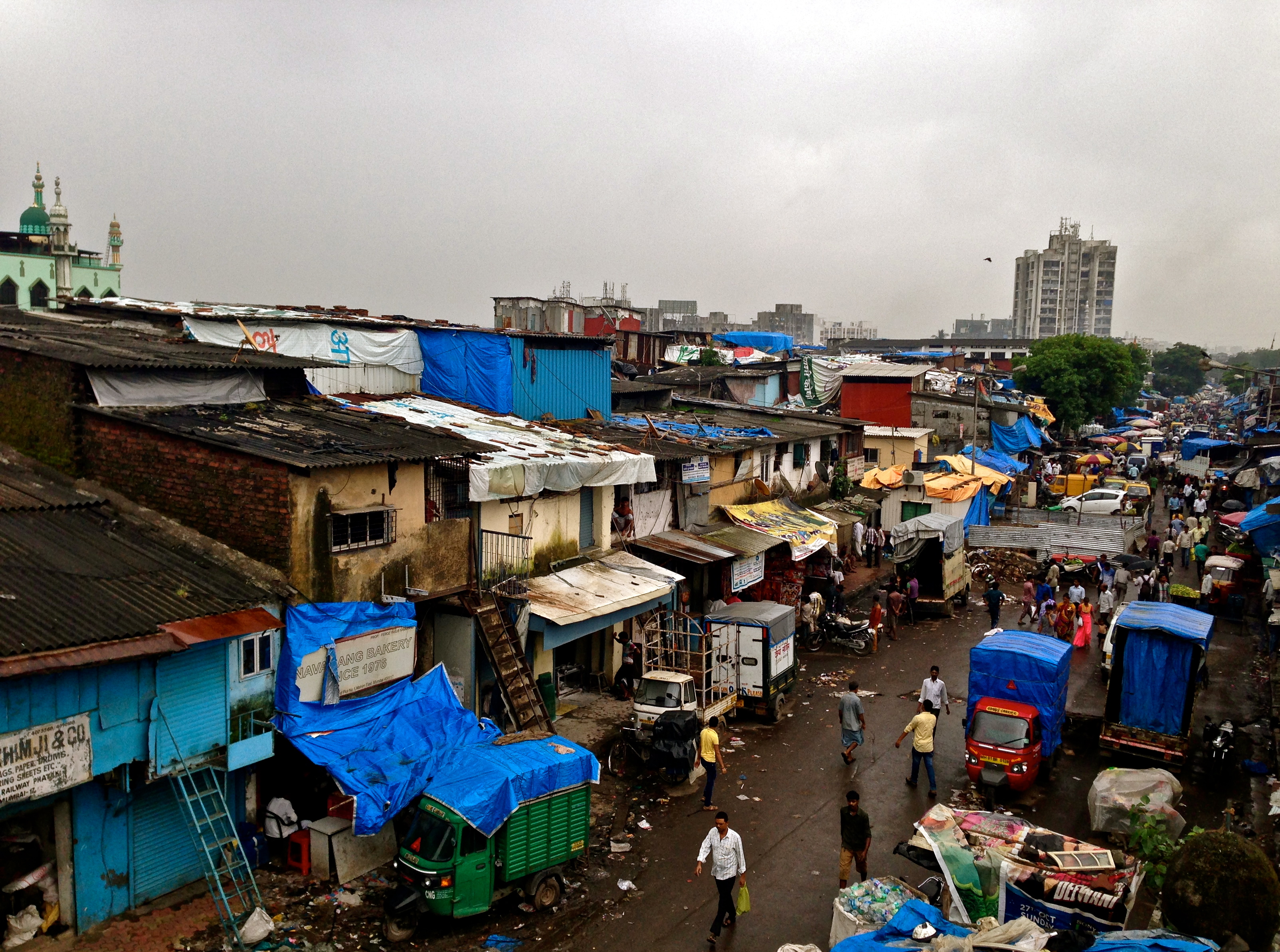
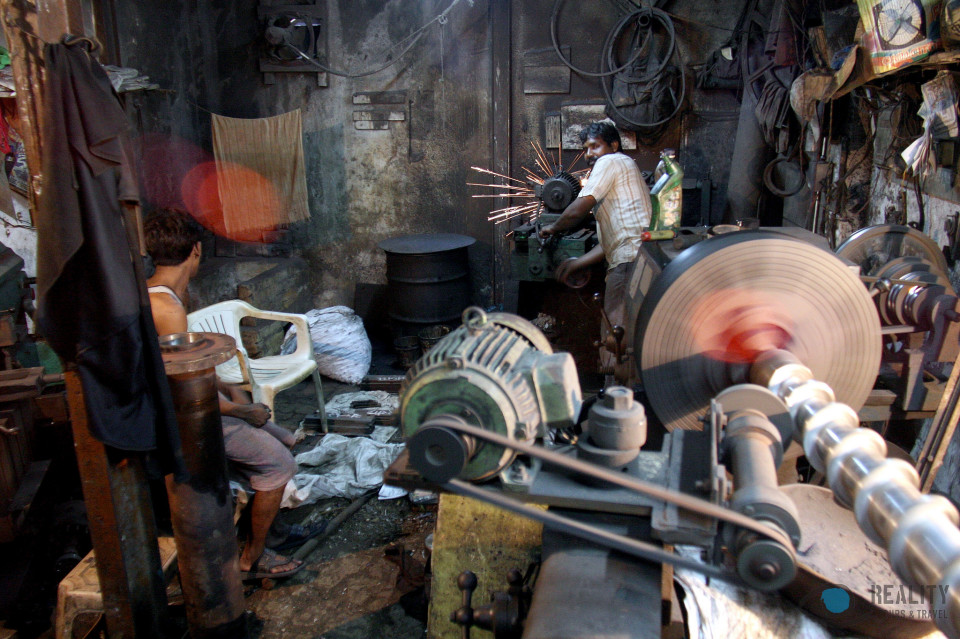
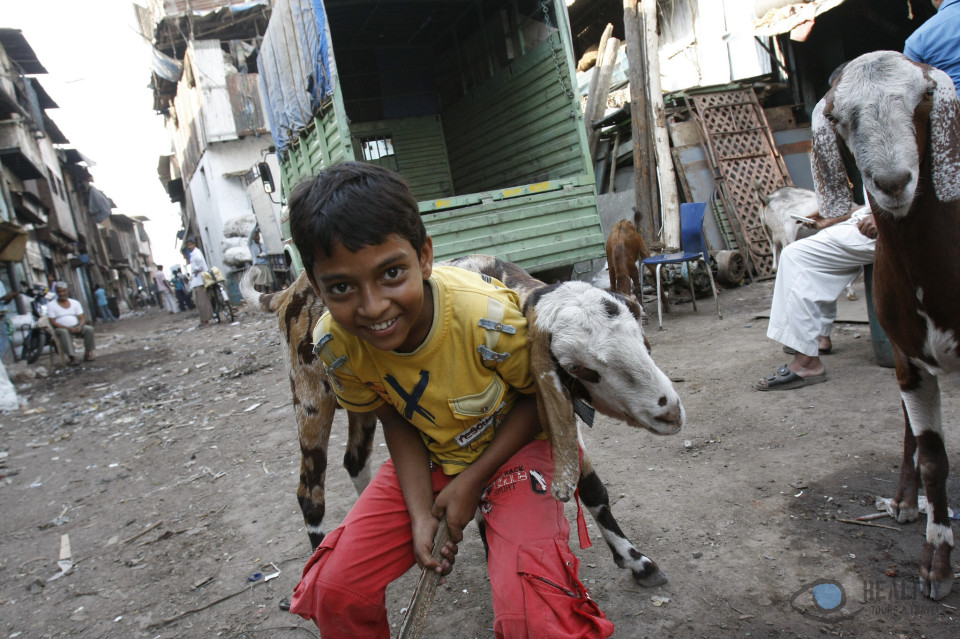
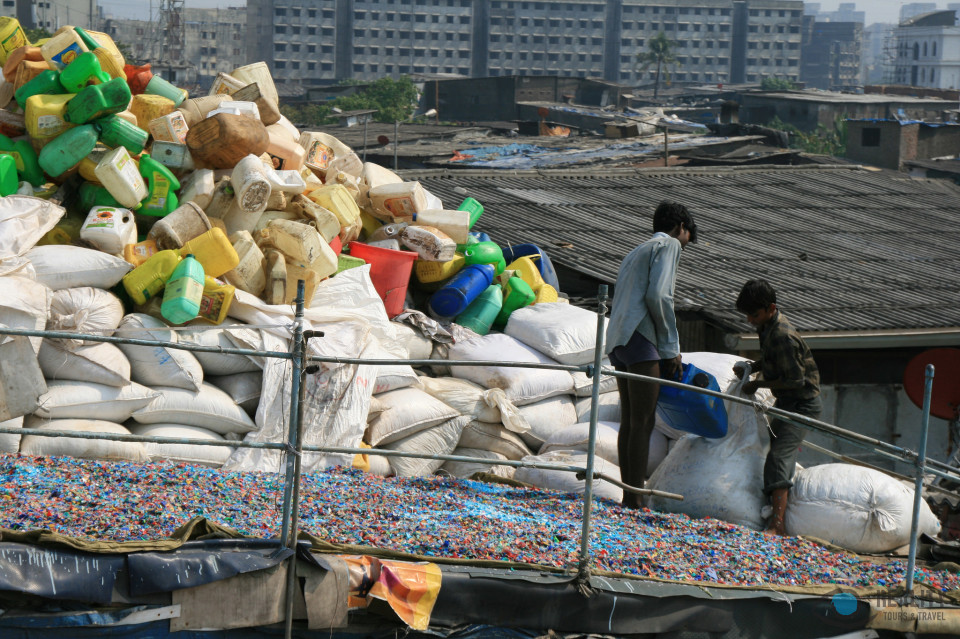
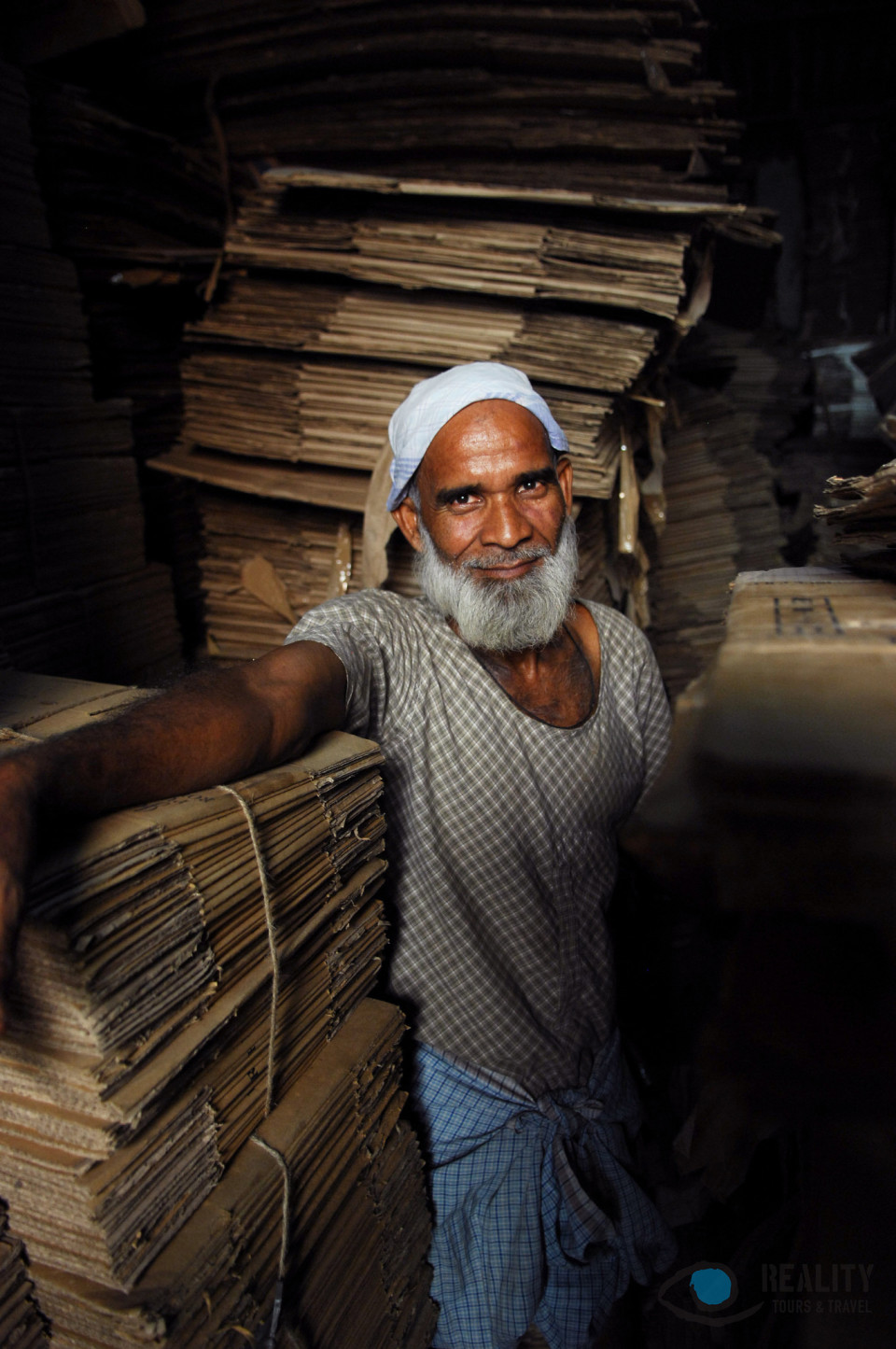
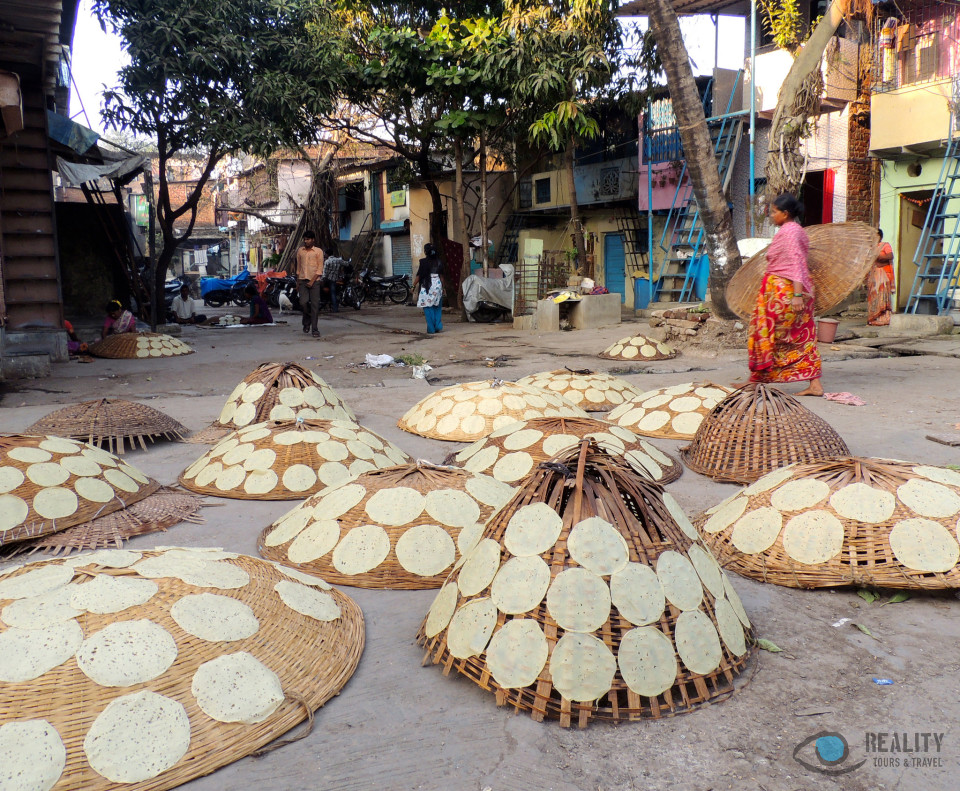
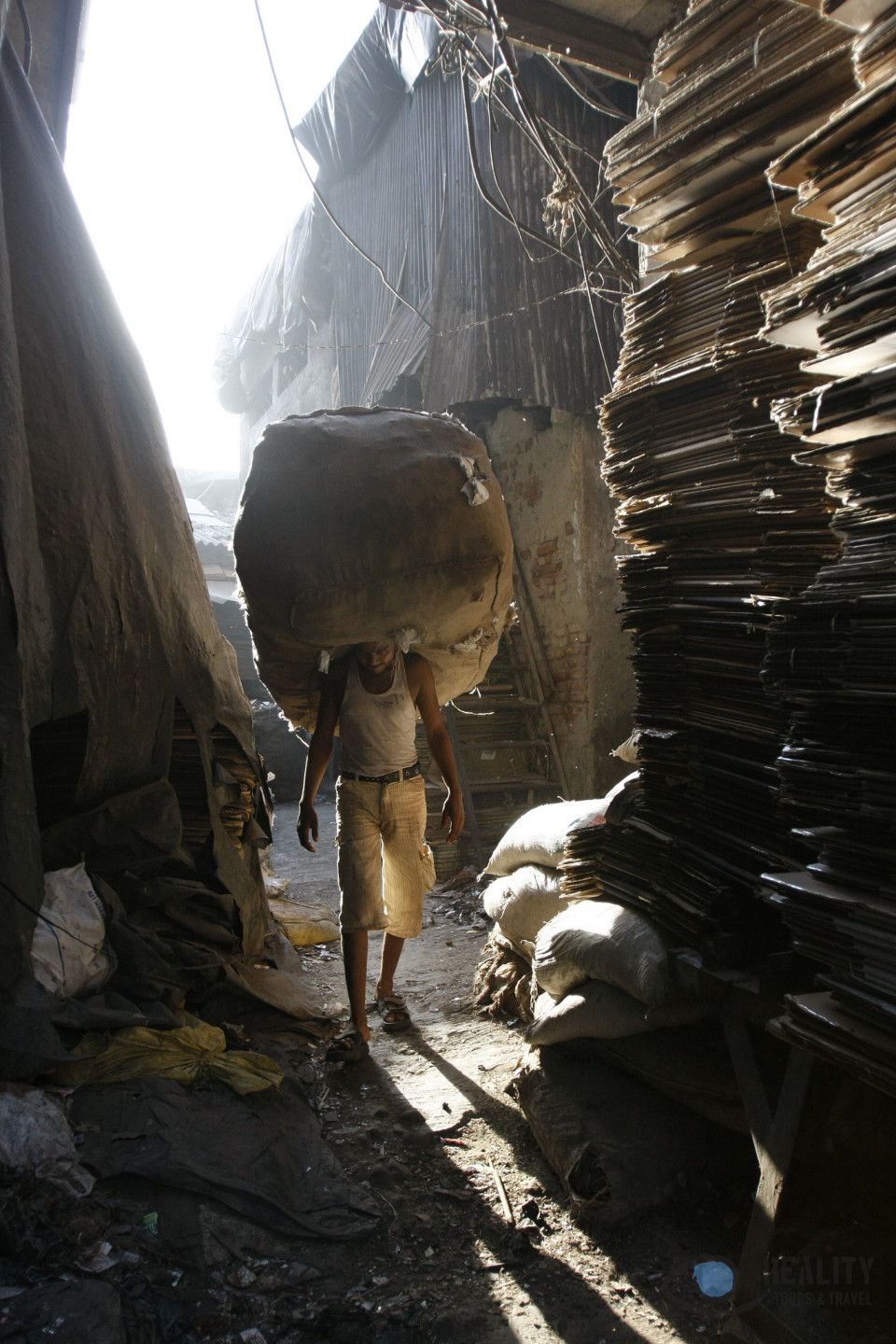






2 Comments
Mel- your words are beautiful- I felt like I was there with you in Mumbai!!
Thank you Michelle! So happy to know you are reading along and enjoying 🙂